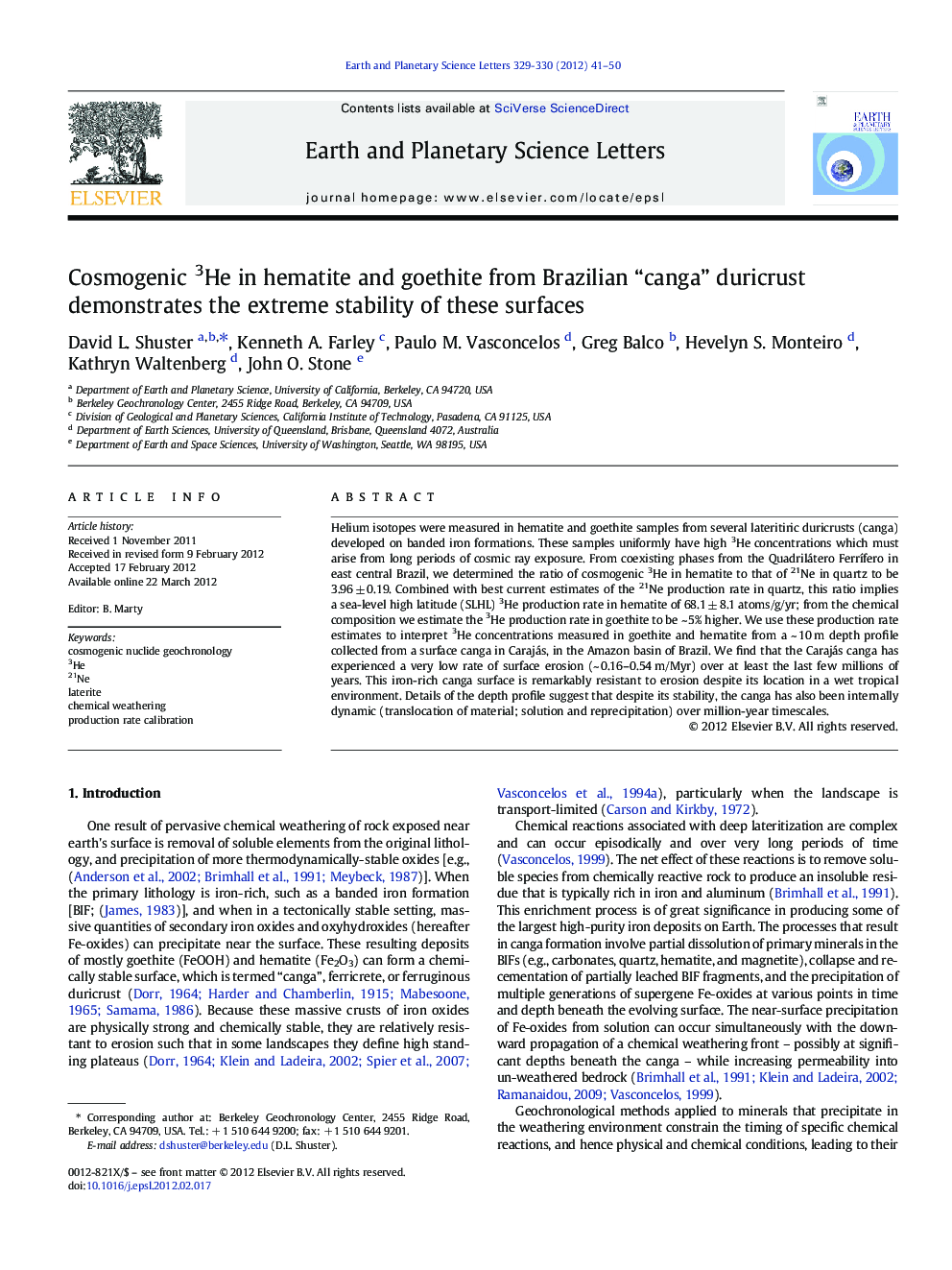| Article ID | Journal | Published Year | Pages | File Type |
|---|---|---|---|---|
| 4677534 | Earth and Planetary Science Letters | 2012 | 10 Pages |
Helium isotopes were measured in hematite and goethite samples from several lateritiric duricrusts (canga) developed on banded iron formations. These samples uniformly have high 3He concentrations which must arise from long periods of cosmic ray exposure. From coexisting phases from the Quadrilátero Ferrífero in east central Brazil, we determined the ratio of cosmogenic 3He in hematite to that of 21Ne in quartz to be 3.96 ± 0.19. Combined with best current estimates of the 21Ne production rate in quartz, this ratio implies a sea-level high latitude (SLHL) 3He production rate in hematite of 68.1 ± 8.1 atoms/g/yr; from the chemical composition we estimate the 3He production rate in goethite to be ~ 5% higher. We use these production rate estimates to interpret 3He concentrations measured in goethite and hematite from a ~ 10 m depth profile collected from a surface canga in Carajás, in the Amazon basin of Brazil. We find that the Carajás canga has experienced a very low rate of surface erosion (~ 0.16–0.54 m/Myr) over at least the last few millions of years. This iron-rich canga surface is remarkably resistant to erosion despite its location in a wet tropical environment. Details of the depth profile suggest that despite its stability, the canga has also been internally dynamic (translocation of material; solution and reprecipitation) over million-year timescales.
► Fe-oxides in lateritiric duricrusts (canga) have high concentrations of cosmogenic 3He. ► The ratio of cosmogenic 3He in hematite to that of 21Ne in quartz is 3.96 ± 0.19. ► A surface canga in the Brazil Amazon experienced only ~ 0.16–0.54 m/Myr of erosion. ► The canga has also been internally dynamic over million-year timescales.
